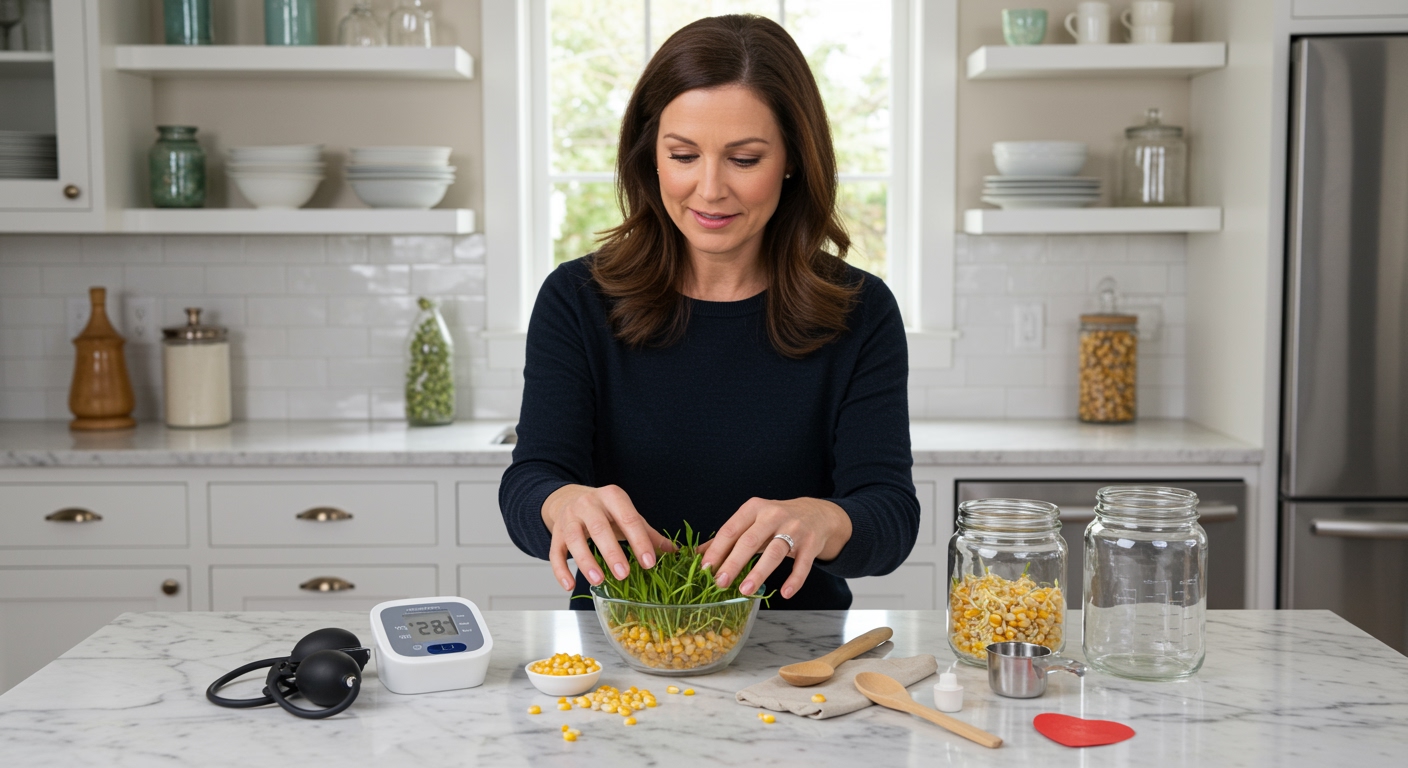✪ Key Takeaway: Yardlong beans can help hypotension patients due to their potassium content and natural sodium levels.
Introduction
Your doctor just told you that your blood pressure is too low and you need to make dietary changes.
You might be wondering if adding more vegetables like yardlong beans to your diet will help or hurt your condition since most nutrition advice focus es on lowering blood pressure.
Hi, I’m Abdur, your nutrition coach and today I’m going to explain how yardlong beans can actually support healthy blood pressure levels in people with hypotension.
What Makes Yardlong Beans Different From Regular Beans?
Yardlong beans contain a unique mineral profile that sets them apart from common green beans.
These long green vegetables provide moderate potassium levels without the extremely high amounts found in other legumes.
The sodium content in yardlong beans is naturally higher than most vegetables, which can benefit people with low blood pressure.
Fresh yardlong beans contain approximately 240 milligrams of potassium per 100 grams, making them a balanced choice for hypotension management.
Unlike kidney beans or black beans that can cause dramatic blood pressure changes, yardlong beans provide gentle mineral support.
✪ Fact: Yardlong beans are actually more closely related to black-eyed peas than green beans.
How Do Yardlong Beans Affect Blood Pressure Mechanisms?
Your blood pressure depends on the delicate balance between sodium and potassium in your bloodstream.
When you have hypotension, your blood vessels are often too relaxed and your blood volume might be insufficient.
Yardlong beans provide natural sodium that helps your kidneys retain more water, increasing blood volume safely.
The potassium content works with sodium to maintain proper fluid balance without causing dangerous spikes.
These beans also contain magnesium and folate that support healthy blood vessel function and circulation.
The fiber in yardlong beans helps stabilize blood sugar, preventing the drops that can worsen hypotensive episodes.
✪ Pro Tip: Eat yardlong beans with a small amount of sea salt to maximize their blood pressure supporting effects.
What Is The Best Way To Prepare Yardlong Beans For Hypotension?
The preparation method significantly affects how yardlong beans impact your blood pressure.
Light steaming preserves the natural minerals while making the beans easier to digest than raw consumption.
Adding a pinch of sea salt during cooking enhances the sodium content without overwhelming your system.
Stir-frying yardlong beans with garlic and ginger creates a warming effect that can help improve circulation.
Avoid boiling these beans for long periods because this leaches out the water-soluble vitamins and minerals you need.
Combining yardlong beans with healthy fats like olive oil helps your body absorb the fat-soluble nutrients more effectively.
✪ Note: Cook yardlong beans until tender but still crisp to maintain maximum nutritional value.
How Much Should Hypotension Patients Eat Daily?
Most people with low blood pressure can safely consume one cup of cooked yardlong beans daily.
This amount provides approximately 300-400 milligrams of potassium without causing electrolyte imbalances.
Start with smaller portions like half a cup to see how your body responds before increasing the amount.
People taking blood pressure medications should monitor their levels closely when adding yardlong beans to their diet.
The timing matters too – eating these beans with your largest meal helps prevent post-meal blood pressure drops.
Spread your yardlong bean consumption throughout the day rather than eating large amounts at once for steady benefits.
✪ Pro Tip: Keep a blood pressure log when adding yardlong beans to track your body’s response.
Are There Any Risks For Hypotension Patients?
Some people with hypotension might experience digestive discomfort when first introducing yardlong beans.
The fiber content can cause bloating or gas if you increase your intake too quickly.
People with kidney problems should consult their doctor before eating yardlong beans regularly due to the potassium content.
Those taking certain heart medications might need to adjust their dosage when adding these mineral-rich vegetables to their diet.
Raw yardlong beans contain compounds that can interfere with protein digestion, so always cook them thoroughly.
If you notice any unusual symptoms like rapid heartbeat or dizziness after eating yardlong beans, stop consumption and contact your healthcare provider.
✪ Note: Always introduce new foods gradually to allow your digestive system to adapt properly.
The Bottom Line
Yardlong beans can be a valuable addition to a hypotension management diet when consumed in appropriate amounts and prepared correctly.
The best nutrition advice is the one that fits your unique health situation and lifestyle – what works for high blood pressure might not work for low blood pressure.
I would love to hear about your experience with yardlong beans or any questions you might have about managing hypotension through nutrition in the comments below.
References
At NutritionCrown, we use quality and credible sources to ensure our content is accurate and trustworthy. Below are the sources referenced in creating this article:
- PMC: Nutritional and Health Benefits of Legumes
- Century Medical: What to Eat to Help Raise Low Blood Pressure
- FoodStruct: Yardlong Bean Nutritional Information
- Vinmec: Diet for People with Low Blood Pressure





